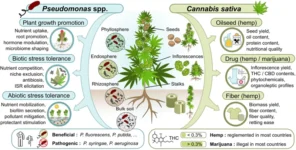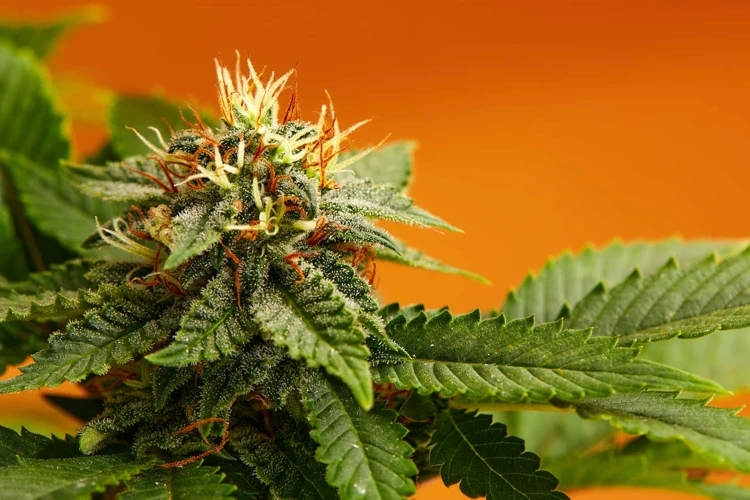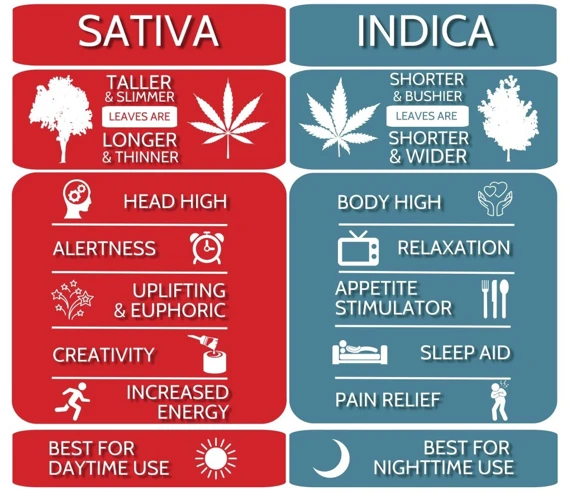
Comparing Disease-Resistant and Traditional Cannabis Strains
Cannabis growers face numerous challenges when cultivating their plants, the most significant of which is the threat of disease. To combat this problem, disease-resistant cannabis strains have been developed, which offer growers another option to consider. However, while the benefits of growing disease-resistant strains are clear, there are also potential drawbacks to this approach that must be taken into account. In this article, we will take a detailed look at the advantages and disadvantages of growing disease-resistant cannabis strains, as well as compare their yields and potency to traditional strains. By the end, readers will have a comprehensive understanding of the benefits and potential drawbacks of choosing disease-resistant strains over traditional ones.
The Advantages and Disadvantages of Growing Disease-Resistant Cannabis Strains
Contents
When choosing which cannabis strain to grow, growers must consider various factors. One of the key factors to consider is whether to grow a disease-resistant strain, which has been genetically modified to combat common cannabis diseases, or a traditional strain that is more susceptible to infections. Each option has its advantages and disadvantages, and it can be difficult to make a decision without weighing the pros and cons. In this section, we will explore the benefits and downsides of growing disease-resistant cannabis strains.
Advantages of Growing Disease-Resistant Cannabis Strains
Growing disease-resistant cannabis strains has several advantages over traditional strains. Here are some of the main benefits:
- Higher Yield: Disease-resistant cannabis strains have a better chance of survival and growth than traditional strains, leading to higher yields. This is especially important for commercial growers who need to maximize their profits.
- Reduced Pesticide Use: By planting disease-resistant cannabis strains, growers can reduce or eliminate the need for pesticides, which can be harmful to the environment and pose health risks to consumers.
- Increased Sustainability: Disease-resistant cannabis strains require less water and nutrients to grow, making them more sustainable and eco-friendly.
- Greater Resilience: Disease-resistant cannabis strains have a stronger immune system, making them more resilient to pests, diseases, and environmental stressors. This means that they’re less likely to die or experience stunted growth, leading to better overall plant health.
- Improved Quality: Because disease-resistant cannabis strains are less likely to experience stress or damage, they can produce higher-quality buds with more consistent cannabinoid profiles.
While there are certainly advantages to growing disease-resistant cannabis strains, it’s important to also consider the potential disadvantages, which we’ll explore in the next section.
Disadvantages of Growing Disease-Resistant Cannabis Strains
Although disease-resistant cannabis strains have their advantages, there are also some disadvantages of growing them that need to be considered. These include:
| Disadvantages | Explanation |
|---|---|
| Possible reduction in potency | Some disease-resistant strains may not have the same potency levels as traditional strains. This is because they may have been bred for disease resistance rather than higher THC levels. |
| Higher cost of seeds | Many disease-resistant strains are developed by seed companies and can be more expensive to purchase than traditional strains. |
| Limited strain options | Disease-resistant strains are not yet as widely available as traditional strains, so there may be fewer options to choose from. |
| Potential lack of genetic diversity | Some breeders may focus solely on developing disease-resistant strains, which could lead to a potential lack of genetic diversity and an increased risk of the development of new diseases that these strains may not be able to resist. |
It is important for growers to weigh these potential drawbacks against the benefits of disease-resistant strains before deciding whether to use them in their cultivation.
Comparing the Yields of Disease-Resistant and Traditional Cannabis Strains
One of the key factors that growers consider when choosing a cannabis strain to cultivate is its yield potential. Disease-resistant cannabis strains have been gaining popularity in recent years, touted as a solution to common plant ailments that can dramatically impact yields. However, it’s important to weigh the benefits of disease-resistance against potential trade-offs in yield compared to traditional strains. In this section, we’ll delve deeper into comparing the yields of disease-resistant strains against traditional strains, examining the benefits and drawbacks of each.
Disease-Resistant Cannabis Strains Yield
When it comes to the yield of disease-resistant cannabis strains, it varies depending on the specific strain and the conditions in which it is grown. However, in general, disease-resistant strains are bred to produce higher yields than traditional strains.
For example, one study found that the disease-resistant strain Blue Dream had a yield between 400-600 grams per square meter when grown indoors, while the traditional strain Sour Diesel only yielded between 300-500 grams per square meter.
Another disease-resistant strain, Gorilla Glue, has been reported to produce even higher yields, with some growers reporting up to 700 grams per square meter. This is likely due to the fact that disease-resistant strains are bred to be hardy and resistant to environmental stressors, allowing them to thrive and produce more buds.
Of course, yield can also depend on a variety of other factors, such as the quality of the soil, the amount of light and water the plants receive, and the expertise of the grower. However, in general, disease-resistant strains have the potential to produce higher yields than traditional strains.
It’s also worth noting that higher yields don’t always equate to higher potency, which is an important factor to consider for many cannabis consumers. We’ll dive into the potency of disease-resistant and traditional strains in the next section.
Yield of Traditional Cannabis Strains
When it comes to the yield of traditional cannabis strains, several factors can affect it, including genetics, lighting, nutrients, watering, and temperature. Typically, traditional strains have a moderate to high yield, but it can vary greatly depending on these factors.
One of the most popular traditional strains, Acid, is known for its high yield and easy-to-grow nature. It produces between 500 to 700 grams per square meter and will flower in just 7-9 weeks. Another traditional strain, OG Kush, has a somewhat lower yield but is still considered good at around 450-500 grams per square meter and a flowering time of 8-9 weeks.
Other strains, like the Haze family, can produce a high yield, but they also require more care. For example, Super Silver Haze can yield up to 800 grams per square meter if grown in the right conditions, but it takes up to 11 weeks to flower.
It is important to note that traditional strains may be more susceptible to disease and pests, leading to lower yields if not properly cared for. This is where disease-resistant strains have the advantage. However, as we mentioned earlier, disease-resistant strains may have a slightly lower yield compared to traditional strains.
Analyzing the Potency of Disease-Resistant and Traditional Cannabis Strains
One of the most essential aspects of growing cannabis is considering its potency. Knowing the potency of a strain is a crucial factor in determining its effectiveness for medicinal or recreational purposes. In this section, we will delve into the potency of disease-resistant cannabis strains in comparison to traditional strains. By analyzing the potency of both types of strains, we can determine which one is superior and more suitable for specific purposes. Let’s explore the variables that impact the potency of cannabis and how disease-resistant strains fare in this regard.
Potency of Disease-Resistant Cannabis Strains
When it comes to the potency of disease-resistant cannabis strains, it really depends on the specific strain in question. However, it is worth noting that in general, disease-resistant strains have been bred for their resiliency and other traits related to disease resistance, rather than their potency.
That being said, there are a number of disease-resistant strains that are known to have impressive levels of potency. For example, one strain that has received a lot of attention in recent years is Cherry Wine, which is known for its high CBD content and potent effects. This strain has been bred specifically to be highly resistant to diseases such as powdery mildew, which can be a major problem for cannabis growers.
Another disease-resistant strain that has gained popularity in recent years is ACDC. This strain is known for its high CBD content and low THC levels, making it ideal for medicinal purposes. ACDC is also highly resistant to a variety of diseases, making it a popular choice among growers who want to ensure that their crops are protected from potential threats.
To get a better sense of the potency of disease-resistant strains, let’s take a look at a table that compares the THC and CBD levels of a few popular disease-resistant strains:
| Strain Name | THC Level | CBD Level |
|---|---|---|
| Cherry Wine | Up to 22% | Up to 2% |
| ACDC | Up to 1% | Up to 20% |
| Cannatonic | Up to 15% | Up to 12% |
As you can see, while these strains are known for their disease resistance, they still pack a punch when it comes to potency. And with advances in breeding techniques and genetics research, it is likely that we will see more and more disease-resistant strains with impressive levels of potency in the years to come.
Potency of Traditional Cannabis Strains
When it comes to the potency of traditional cannabis strains, it can vary greatly depending on the specific strain. The chart below compares the THC (tetrahydrocannabinol) levels of some popular traditional strains.
| Strain | THC Content |
|---|---|
| OG Kush | 19-27% |
| Sour Diesel | 20-25% |
| Pineapple Express | 16-26% |
| Afghan Kush | 17-20% |
| Blue Dream | 17-24% |
As seen in the table, THC levels in traditional strains can range from 16-27%. It is important to note that THC levels are not the only factor in the potency of a strain, as other cannabinoids and terpenes also play a role in the overall effect. However, THC is the primary psychoactive compound and is what typically determines the potency of the strain.
It is also worth mentioning that while higher THC levels may be desirable for some users, it is not necessarily an indication of a better quality strain. In fact, some users may prefer lower THC levels as they can provide a more mild and manageable experience. Ultimately, the choice of strain and potency should be based on individual preferences and needs.
Conclusion
After carefully analyzing the yields and potency of disease-resistant and traditional cannabis strains, it is important to note that both types of strains have their unique advantages and disadvantages.
On one hand, disease-resistant strains are highly attractive to growers as they are less prone to diseases, pests and environmental stressors. This means that growers can save money on investment in pesticides, fungicides and other treatments. Furthermore, disease-resistant strains often preserve their quality and yield even in unfavorable conditions, making them an ideal option for outdoor growers.
On the other hand, traditional cannabis strains often demonstrate higher yields and potency than their disease-resistant counterparts. These strains have been selectively bred over many generations and produce highly sought after flavors, aromas and effects. Experienced growers may also find that traditional strains offer a more efficient method of cultivation, as they have already perfected their growing techniques over the years.
Despite these differences, it is important to remember that the cannabis industry is highly diverse and constantly evolving. It is crucial for growers and consumers alike to remain open-minded and adaptive to new strains and trends. As such, the comparison between disease-resistant and traditional cannabis strains should be viewed as a starting point for further exploration into the wide world of cannabis cultivation.
Frequently Asked Questions
What are disease-resistant cannabis strains and how are they different from traditional strains?
Disease-resistant cannabis strains are varieties of marijuana plants that are genetically engineered to have heightened resistance to diseases, pests, and other environmental stressors. They are different from traditional strains in that they are specifically bred to maximize yield and resilience.
What are the advantages of growing disease-resistant cannabis strains?
The advantages of growing disease-resistant cannabis strains include better yields, lower risk of plant destruction due to disease or pests, less reliance on harmful pesticides, and more consistent quality of buds.
What are the disadvantages of growing disease-resistant cannabis strains?
The disadvantages of growing disease-resistant cannabis strains include higher initial costs for seeds or clones, potential genetic instability from repeated breeding, and limited genetic diversity in the cultivars available.
How do disease-resistant cannabis strains compare in yield to traditional strains?
Disease-resistant cannabis strains tend to have higher yields than traditional strains, due to their resilience against disease and stressors. However, the exact yield will depend on the specific strain, growing conditions, and cultivation techniques used.
What is the yield for disease-resistant cannabis strains?
The yield for disease-resistant cannabis strains can vary greatly depending on a variety of factors, including the cultivar, growing conditions, and cultivation techniques used. However, these strains typically produce higher yields than traditional strains due to their resilience to stressors.
What is the yield for traditional cannabis strains?
The yield for traditional cannabis strains can vary greatly depending on the cultivar, growing conditions, and cultivation techniques used. Traditional strains tend to produce moderate to high yields, but they may be more susceptible to disease and other environmental stressors.
How does the potency of disease-resistant strains compare to traditional strains?
The potency of disease-resistant cannabis strains can be just as high, if not higher, than traditional strains. This is because the genetic engineering involved in creating disease-resistant strains does not necessarily impact the plant’s overall potency.
What is the potency of disease-resistant cannabis strains?
The potency of disease-resistant cannabis strains can vary based on the specific strain and growing conditions, but it can be just as high, if not higher, than traditional strains. This is because the genetic engineering for disease-resistance does not necessarily impact the plant’s overall potency.
What is the potency of traditional cannabis strains?
The potency of traditional cannabis strains can vary greatly depending on the cultivar, growing conditions, and cultivation techniques used. However, many traditional strains have high levels of THC or CBD, which are two of the most well-known and potent cannabis compounds.
Are there any environmental concerns surrounding the cultivation of disease-resistant cannabis strains?
There is some concern about the potential impact of growing genetically engineered crops on the environment. However, disease-resistant cannabis strains are often engineered to require fewer pesticides and resources, which could help mitigate potential environmental impacts.




